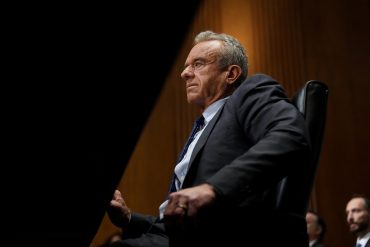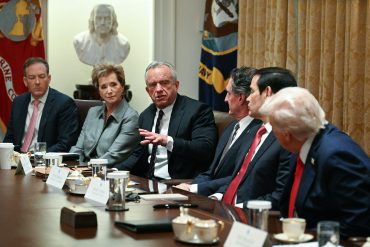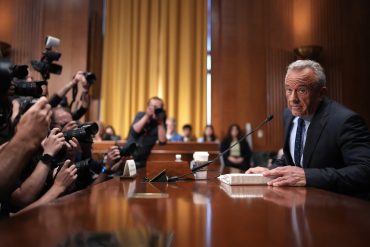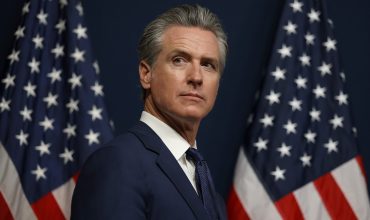
- AI Governance
- Artificial Intelligence
- Healthcare AI
Inside the ‘Regulatory Cartel’ Debate Over Healthcare AI
6 minute read

Healthcare AI coalition faces government pushback as Amazon exits and industry investment doubles despite regulatory tensions.
On October 8, Health and Human Services Secretary Robert F. Kennedy Jr. took to social media with an unambiguous warning: “We must not let the Coalition for Health AI (CHAI) build a regulatory cartel.” The statement, delivered with characteristic bluntness, signaled more than political posturing. It marked the opening salvo in what has become a fundamental dispute over who should govern artificial intelligence in American healthcare—and whether industry-led consortia represent collaborative progress or captured regulation.
The timing proved consequential. Within days, Amazon withdrew from CHAI, citing “strategic realignment” in an October 7 SEC filing that left industry observers parsing the subtext. The departure of a company whose cloud infrastructure underpins much of healthcare’s digital architecture dealt a visible blow to the coalition’s claim of unified industry support. By October 9, CHAI’s member roster had been quietly updated to reflect the absence.
What emerges from this confluence of events is not merely a Washington skirmish over bureaucratic turf, but a substantive disagreement about the appropriate balance between innovation velocity and institutional oversight in a sector where algorithmic decisions increasingly determine clinical outcomes.
The Coalition’s Architecture
Launched in 2023 under CEO Brian Anderson, a cardiologist by training, CHAI positioned itself as a voluntary standards body designed to address a genuine market failure. As healthcare organizations rushed to deploy AI tools—from ambient listening systems that transcribe patient encounters to generative models that draft clinical notes—the absence of common frameworks for validation created both risk and inefficiency.
The coalition’s approach centered on certification. It designated two assurance labs: Mayo Clinic’s AI Reimagined and the University of Pennsylvania’s Perelman School of Medicine. These facilities evaluate algorithms for bias, transparency, and real-world performance—addressing concerns that have dogged earlier AI deployments, particularly in image recognition systems that demonstrated racial disparities.
We must not let the Coalition for Health AI (CHAI) build a regulatory cartel.
A September 2025 partnership with The Joint Commission, which accredits the vast majority of American hospitals, extended CHAI’s influence significantly. The joint guidance on AI integration urged rigorous pre-deployment testing and continuous monitoring, establishing expectations that many providers would likely adopt regardless of regulatory mandate.
This model of industry self-regulation through technical consensus has precedents, from electrical engineering standards to internet protocols. The question Kennedy and his deputies now pose is whether it serves the public interest in a domain as consequential as medical care.

The Administration’s Counter-Theory
The critique articulated by Kennedy, along with Deputy Health Secretary Jim O’Neill and FDA Commissioner Marty Makary in an October 9 op-ed, rests on several premises. First, that CHAI lacks democratic legitimacy—its standards emerge from private negotiation among parties with commercial interests, not public deliberation. Second, that the coalition’s membership structure favors incumbents: companies with the resources to participate in standards-setting gain first-mover advantages in compliance, while smaller competitors face higher barriers to entry.
Third, and perhaps most substantively, that voluntary frameworks may calcify prematurely, encoding current technical approaches before alternatives can prove themselves. This concern resonates with broader regulatory theory: industry-led standards can suppress innovation by establishing benchmarks that reflect existing capabilities rather than aspirational goals.
Makary moved quickly to establish an alternative process. On October 5, the FDA issued a Request for Information on measuring AI-enabled medical devices in real-world settings, with comments due November 15. The docket explicitly solicits input on performance metrics, from accuracy across demographic groups to robustness against data drift—effectively inviting public participation in the standard-setting that CHAI conducted behind closed doors.
The maneuver represents more than procedural preference. It reflects a view that healthcare AI governance should flow through traditional regulatory channels, with their attendant transparency requirements and accountability mechanisms, rather than through private consortia that answer primarily to their members. Yet as these debates intensify, they cast a shadow over the capital that has begun to flow freely into the sector, testing whether investor conviction can outpace policy friction.
Investment Flows Amid Uncertainty
While this jurisdictional dispute unfolds, capital allocation tells a different story. Healthcare AI deal volume has roughly doubled since 2022, with 58 transactions in the first half of 2025 representing a 120 percent increase from the comparable period. The sector now captures 63 percent of digital health funding—$4.7 billion of a $7.5 billion total—even as broader healthcare venture capital has contracted sharply to $3 billion in the first half, the lowest since 2013.
This divergence is instructive. The macro environment remains challenging: elevated interest rates, election-year uncertainty, and a general pullback from speculative technology bets have crimped venture activity across sectors. Healthcare AI’s resilience suggests investors perceive tangible returns rather than speculative promise.
The evidence supports this assessment. NVIDIA’s March 2025 survey of 500 healthcare and life sciences organizations found that 81 percent reported revenue increases attributable to AI tools, 73 percent cited operational savings, and 78 percent planned increased budgets for 2025. The Department of Health and Human Services’ Q3 AI Adoption Dashboard showed 71 percent of digital health entities deploying generative AI for clinical documentation and drug discovery, up from 52 percent a year earlier.
Specific applications demonstrate concrete value. Ambient listening technology has reduced physician burnout by 40 percent in pilot programs at institutions including Cleveland Clinic. Retrieval-augmented generation systems, which combine large language models with proprietary medical databases, have compressed drug discovery hypothesis testing from months to weeks in some pharmaceutical workflows.
Yet adoption remains uneven. The OECD’s June 2025 Digital Health Report noted that while 63 percent of surveyed organizations have piloted generative AI, only 28 percent have achieved enterprise-wide deployment—constrained by interoperability challenges and unresolved questions about liability and oversight.

The Governance Vacuum
This gap between pilot-scale experimentation and production deployment is precisely where standards bodies like CHAI claimed to add value. By establishing common frameworks for validation, they aimed to provide the assurance necessary for risk-averse healthcare systems to move beyond trials to operational integration.
The administration’s intervention thus creates genuine uncertainty. If CHAI’s influence diminishes while federal rulemaking proceeds slowly—constrained by Administrative Procedure Act requirements and competing priorities—the result may be an extended period where healthcare organizations lack clear guidance on responsible AI deployment.
This vacuum affects different actors asymmetrically. Large technology companies possess the resources to navigate regulatory ambiguity through extensive legal review and direct engagement with multiple agencies. Smaller developers face higher relative compliance costs and less access to policymakers. Healthcare providers, caught between competitive pressure to adopt AI tools and legal exposure from algorithmic errors, may default to conservative approaches that slow innovation.
The outcome depends substantially on execution. If the FDA can translate its Request for Information into actionable guidance with reasonable speed, and if HHS can articulate clear principles for AI evaluation, the disruption to CHAI may prove transitional rather than destructive. If federal processes bog down in the complexity of balancing innovation incentives against safety concerns, the current uncertainty could persist, potentially dampening the investment momentum that has characterized the sector.
Forward Implications
Amazon’s departure from CHAI, regardless of its stated rationale, introduces a reputational risk that other members must now weigh. Association with an organization labeled a “regulatory cartel” by a cabinet secretary carries costs, particularly for companies facing antitrust scrutiny in other domains. The coalition’s ability to maintain cohesion among its nearly 3,000 members—and to retain influence with healthcare providers—depends on whether it can reframe its mission in terms the administration finds acceptable, or whether its voluntary approach has been fundamentally rejected.
For the healthcare AI sector more broadly, the episode underscores an enduring tension: the pace of technological change consistently outstrips the capacity of traditional regulatory institutions to evaluate and oversee new capabilities. Industry-led standards bodies emerged as one attempted solution to this mismatch. Their displacement returns the field to a more conventional regulatory posture, with attendant benefits in legitimacy and accountability, but also familiar challenges in agility and technical sophistication.
The resolution of this dispute will shape not only which organizations set standards for healthcare AI, but how quickly algorithms move from research to clinical practice—and, in a globalized field, whether America’s model exports caution or catalyzes convergence. In the balance hangs nothing less than the trust on which medicine’s future rests.







